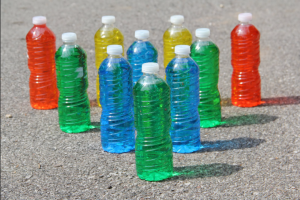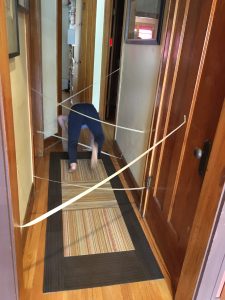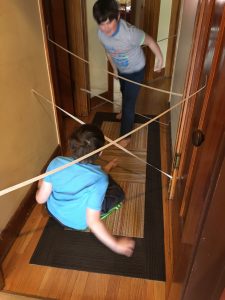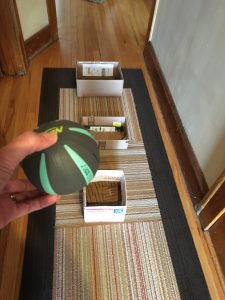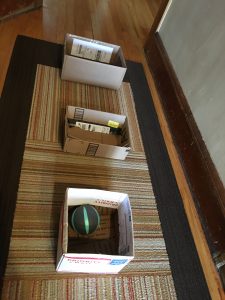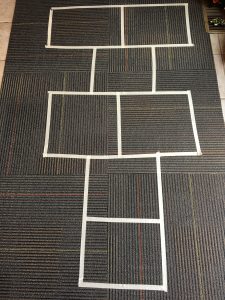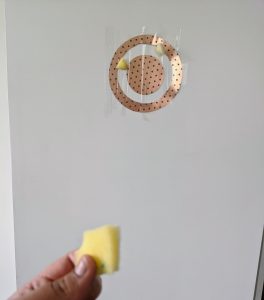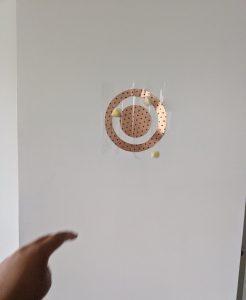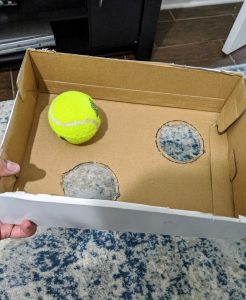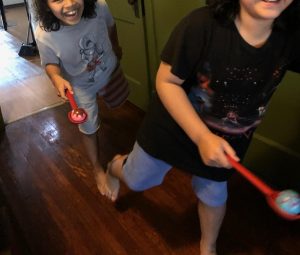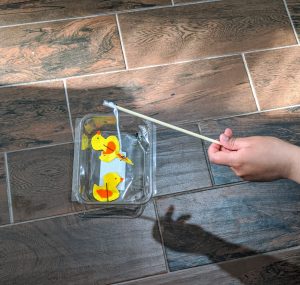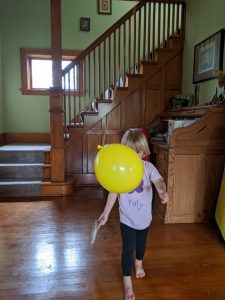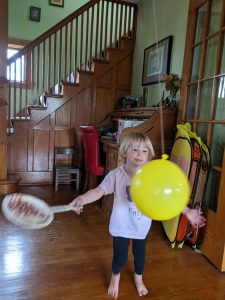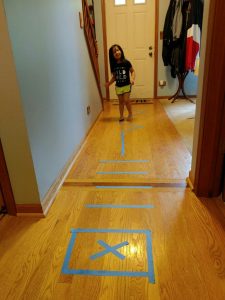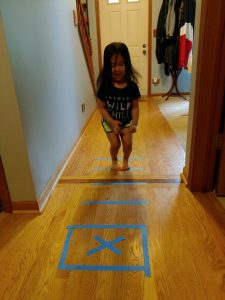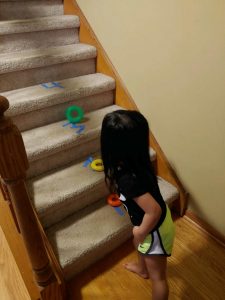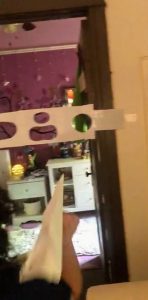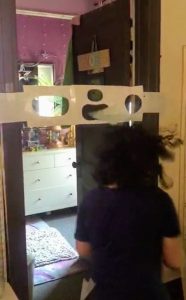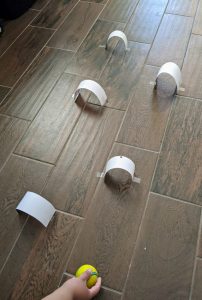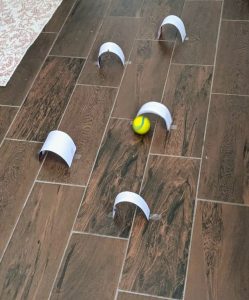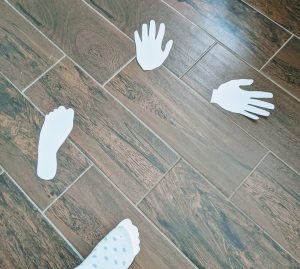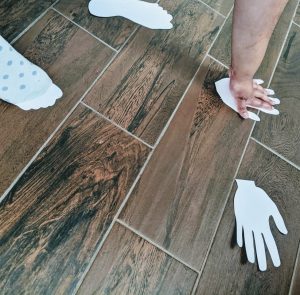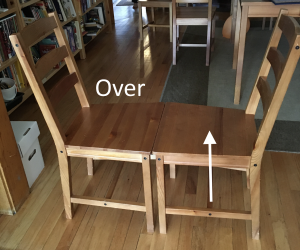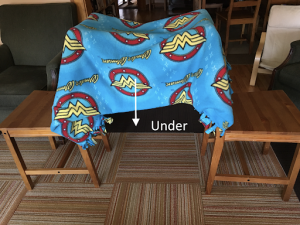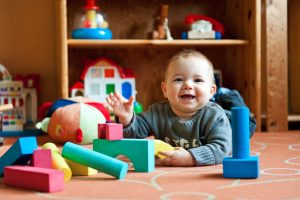The progression in abilities from first motor reflexes to intentional movement, from rolling to sitting to crawling, walking, running, jumping, and more. This also includes fine motor skills, the ability to control the small muscles in the hands and fingers to pinch clay, roll dough, and hold tools to make marks.
These Milestones from the CDC offer some clues to a child’s development:
2 Month Physical Milestones:
Open hands briefly; holds head up when on tummy; moves both arms and legs
4 Month Physical Milestones:
Holds head steady without support when being held; holds a toy when it is put in their hand; uses their arm to swing at toys; brings hand to mouth; pushes onto elbows/forearms when on tummy
6 Month Physical Milestones:
Rolls from tummy to back; pushes up with straight arms when on tummy; leans on hands to support self while sitting
9 Month Milestones:
Gets into a sitting position by themself; moves things from one hand to the other; uses fingers to “rake” food towards themself; sits without support
12 Month Milestones:
Pulls up to stand; walks while holding furniture; drinks from a cup without a lid, held by an adult; picks things up between thumb and pointer finger, like small pieces of food
15 Month Milestones:
Take a few steps independently; uses fingers to feed self some food
18 Month Milestones:
Walks without holding on to anyone or anything; scribbles; drinks from a cup without a lid and may spill sometimes; feeds self with fingers; tries to use a spoon; climbs on and off a couch or chair without help
2-Year-Old Milestones:
Kicks a ball; runs; walks (not climbs) up a few stairs with or without help; eats with a spoon
30 Month Milestones:
Uses hands to twist things, like unscrewing a jar or opening a doorknob; takes off some clothing independently, like loose pants or a jacket; jumps off the ground with both feet; turns book pages one at a time when being read to
3-Year-Old Milestones:
Strings items together, like large beads or macaroni; puts on some clothes independently, like loose pants or a jacket; uses a fork
4-Year-Old Milestones:
Catches a large ball most of the time; serves self some food or water, with adult supervision; unbuttons some buttons; holds crayons or pencil between fingers and thumb (not in fist)
5-Year-Old Milestones:
Buttons some buttons; hops on one foot
Make your own game of bowling using recycled 1 or 2 liter bottles. make them fun by decorating them with colorful masking tape. Helpful tip, seal the top on with a glue gun so the bottles do not crush easily. Use any ball to knock down the pins.
Goal: Children will develop large motor skills and hand-eye coordination with this activity.
Some fun ideas for indoor large motor play for programs with limited access to an outdoor space, bad weather, or to share with families
- Laser maze – Works best in a hallway, but a door frame can work for a shorter obstacle. Using painter’s tape, streamers or yarn, web it between the walls or door frame. Have children walk through without touching the tape.
- Ball toss – Use softballs or bean bags and baskets or boxes. Arrange the boxes in a straight line. Have children take turns hitting the target. You can also use a staircase and have a box on each step, for older children use different size boxes to challenge them.
- Movement dice – Create a die with different movements shown on each side. Have children do the movement they roll or do a sequence of movements based on several rolls. For an added challenge, add a second die with numbers on each side for the number of times they must repeat that move. Simply print the pattern below, draw the movements, cut and fold the pattern into dice and start playing!
Town Square Paper dice
- Hopscotch – Using painters tape or washi tape create your version of a hopscotch board.
- Sticky wall – Place contact paper or thick tape on a wall, sticky side out. Have children throw pompoms or balls of paper to the target. For younger children, lower it down and allow them to place items on the sticky side.
- Ball race – using a box and a few balls, cut out holes on the bottom of a box, then have children then move the box allowing the ball to fall through. For older children, have them work with a larger box in teams, or create many holes and ask the children to try to keep the ball from falling through a hole.
- Bubble wrap road – Lay a path of bubble wrap on the floor and have children use balls or cars on the road. For younger children, have them walk or crawl on the bubble road.
- Balancing course – To work on balance, have children hold a spoon with a ball or pompom, then walk, jump, skip, to the other side of the room. Try a paper plate on their head, or holding toilet paper roll with a ball on top for extra challenge.
- Magnetic fishing– Create a simple magnetic fishing game with paper clips or bobby pins, paper or felt, straws and a magnet. Have children take turns fishing
Printable version Indoor large motor activities
Best for infants around 1 mo. Infant should be lying in front of you. Hold your index fingers up to the infants fingers touch gently until they grasps each finger firmly. Gently pull baby forward and watch baby hold on tight, straighten arms and begin to sit forward. Smile and say things like, “look how strong you are”!
Goal: Supports the development of muscle and vision as baby focuses on your voice and face while using their arm and hand muscles.
Let children use blocks (cardboard or soft blocks work well), pillows/cushions, and even furniture to set up an obstacle course where they can climb, crawl under, and move in various ways to make their way through. This is also something that can be set up outside with natural landscape features, using chalk on sidewalk to mark areas, or even with riding toys as part of the course.
Goal: Children will work collaboratively to set up and run through an obstacle course.
Encourage children to name animals and then move their body like that animal. They can incorporate sounds as well. You might even make an ‘animal parade’. Talk about the different ways they move their bodies to look like the animal and name the body parts they use. (The book From Head to Toe by Eric Carle is a great resource for this activity).
Goal: Expand children’s vocabulary related to body parts and animal names and move in a variety of ways.
Part 2 – Indoor large motor play activities for programs with limited access to an outdoor space, bad weather, or to share with families
Balloon ping pong – Using a paper plate or piece of cardboard and a stick, create a simple paddle. Then tie a string to a balloon and hang it down from the ceiling or doorway. Invite the children to hit the balloon with the paddle.
Tape maze – Use painters’ tape to make a fun maze on the floor. Ask children to then walk, hop, skip and jump to follow the tape. Different lines or shapes can indicate different ways to move. You can also use the maze for a car road by moving toy cars along the tape.
Hit the target toss – Using a bean bag, soft toy or plastic ring, add a mark on each step of a staircase. Add some extra fun and put numbers, colors or shapes on each stair. Ask each child to toss the object at the designated targets. You can also try this on a flat surface, just be sure to arrange the targets further apart from one another.
Paper airplane challenge – Take some paper and use some to cut out shapes of different sizes as targets, then tape the paper with the cut out targets across a doorway. Have children create their own airplane to try to fly through the targets. Encourage creating different kinds of paper planes and challenge the children to fly their airplane through different targets.
Ball Maze – Cut out strips of paper and then use tape to place them on the floor, arrange the arches to create a maze. Using a ball, ask children to roll under the arches to the end of the maze.
Simon Says – Play an active game of Simon Says, using paper cutouts of handprints or footprints, call out the name of the body part to have children move to reach the printout. Try adding different learning concepts, use shapes, colors, numbers depending on the children in your care.
Obstacle Course – Have each child design one part of an obstacle course and take a photo of it, shuffle the order of the photos to decide the order of the obstacle course, you can also draw the order or have children guide one another through the course.
Printable version Indoor large motor activities 2parte
Lie the infant on their tummy on a blanket and sit in front of them. Show the infant a stuffed animal, ball or other toy that rolls encourage baby to reach for toy.
Goal:This activity exercises and strengthens baby’s arms, legs and stomach muscles. It also encourages scooting and crawling.
Sit at a table, hold the baby in your arms in front of you, resting your elbows on the table. Tilt baby up at an angle so you are face to face with the baby. Gently, slowly rock and sing or hum to get babies attention. When baby is looking at you, speak to baby looking straight into baby’s eyes. Gently lower baby on his/her back and repeat.
Goal: Babies focus on the face and voice and build their neck muscles, which helps them hold their head up.

